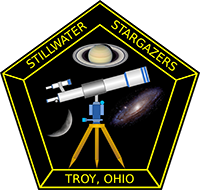This is a collection of useful web sites. Please feel free to comment on the collection. I will keep this updated based on input.
Member’s Sites
News
- Universe Today
- Phys.org’s Space News section
- Spaceflight Now
- Space.com
- Hubble News
- Sky & Telescope
- Astronomy Now
- Astronomy
- NASA TV
Reference
- Cloudy Nights
- Telrad Messier Maps
- Orbital Elements
- Students for the Expolration and Development of Space
- ClearSkies.NL
- Dark Sky Map (2006 data)
- Dark Sky Map (Newer data)
- Sky Marvels
Space telescopes
What’s up?
- Tonight’s Sky
- Satellite tracking
- Meteor showers
- Meteor shower calendar
- This week’s comets
- Your Sky
- The Celestial Observer
- The Current Arora
- On-line Sky Map
- The Night Sky
Want to spend some money?
Software
- Astro Helper
- Jupiter 2
- Neat Java Applets
- Moon Atlas
- My Stars
- Cartes du Ciel
- Hallo Northern Sky
- NexStar compatible software
- RTGUI
- Sky Tools
- What’s Up
Astro imaging
Astro imaging software
- Astro Snap
- Backyard EOS
- Nebulosity
- Astro Tortilla
- Star Tools
- PHD Guiding
- Deep Sky Stacker
- RegiStax
- Planetary Image Pre-Processor
- ExCalibrator




